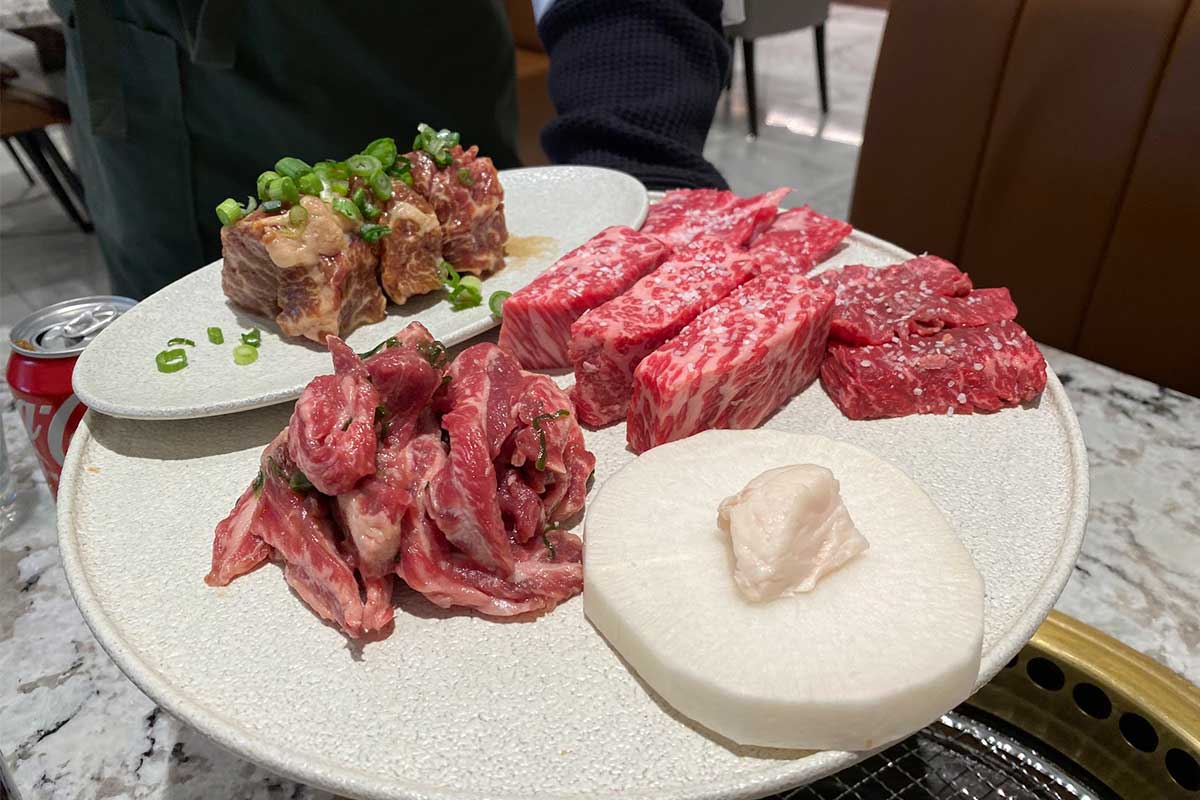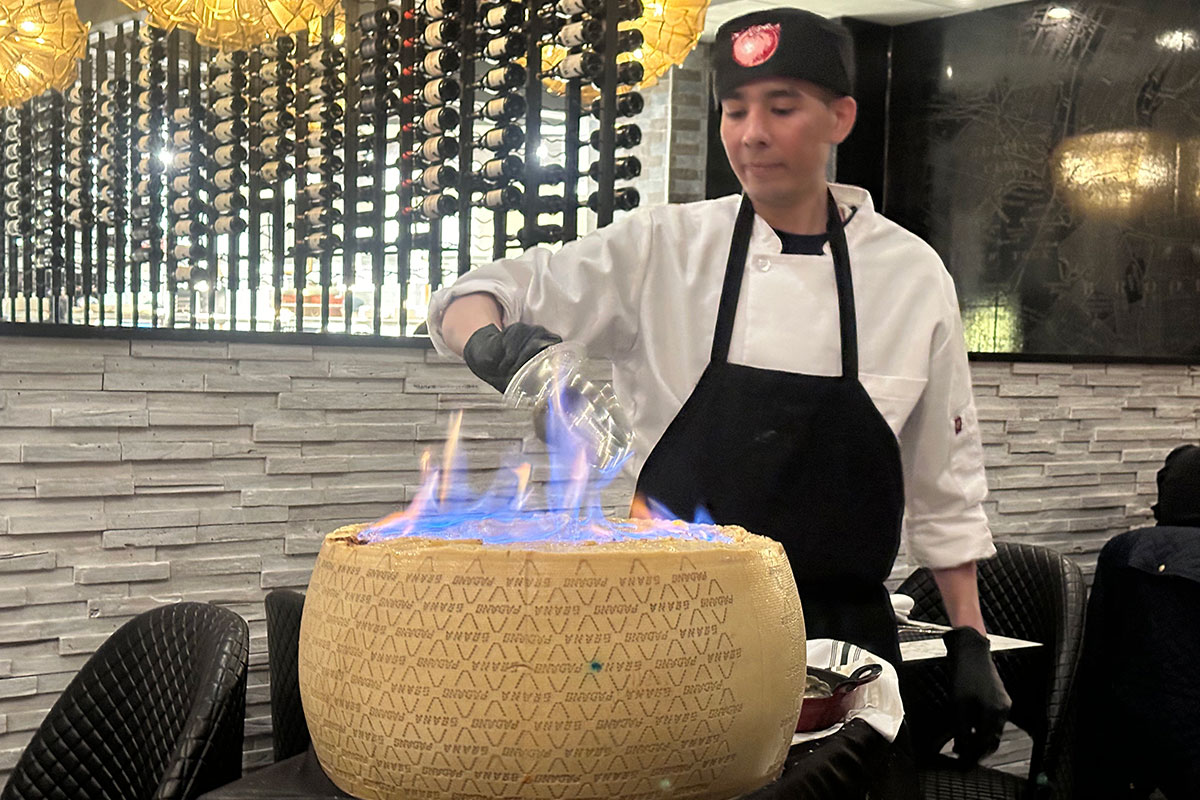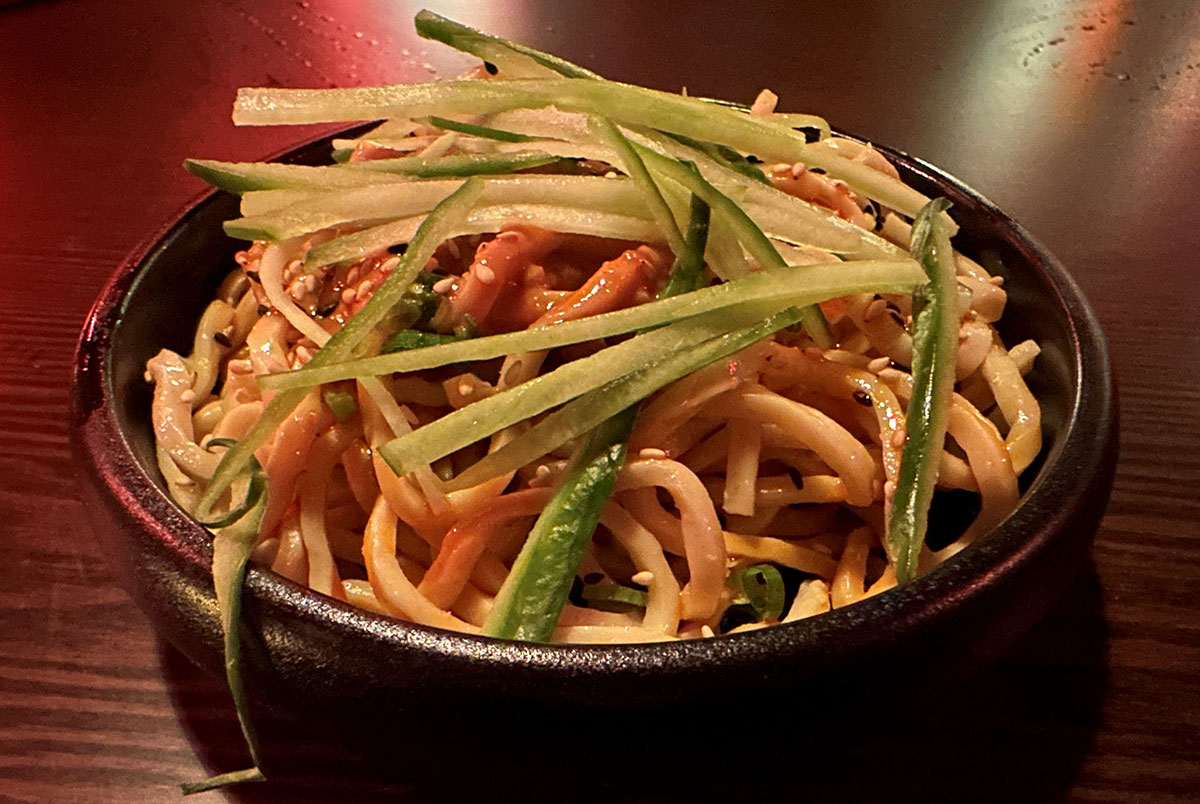For years, I’ve talked, half-facetiously, about my dream restaurant that specializes in the ribs of every animal imaginable. It makes some sense — this cut is among the most versatile on any beast. After all, it results in everything from a rib-eye steak to short ribs.
Restaurateur James Jang and his butcher friend, Mark Kim, had a similar idea. But their Ingle Korean Steakhouse, located in the same Tysons shopping center as China Wok, doesn’t have the bear or elk ribs I envisioned. Instead, as diners enter the modern, wood-on-white dining room, they’re greeted by a cow’s ribcage hanging in a glamorously lit place of honor, something of an altar for a meaty religious rite. Nearly all the prime Angus beef they will eat at Ingle is cut from those hefty bones, usually extracted from a Virginia-bred animal.
The most sensible way to partake at Ingle Korean Steakhouse is ordering the prix fixe. At lunch, this is three courses, while at dinner, it rises to five. I recommend going for lunch in order to take advantage of the bright restaurant space, as well as spend $20 fewer per person on an already gut-busting meal.
As soon as diners arrive at their table, a staffer turns on the grill and delivers banchan. These petite plates always include a funky kimchi and tangy pickled yu choy, both an apt foil to the fatty meats to come. Jang says that his chef, Jay Youn, recently added sesame-scattered broccoli, my least favorite of the three, which I found was at its best dipped in the dressing of the onion-heavy salad that also comes before the meat.
Jang adds that Youn will add one more banchan option in the future, as well as more hot side dishes. Those currently include asparagus and corn cheese, the latter of which is topped with breadcrumbs for a fusion of the Korean barbecue dish and homespun American macaroni and cheese.
Meats are also accompanied by a pebble-sized ball of wasabi, sesame salt, and ssamjang, an intensely savory fermented bean paste dip that adds a just-right dose of salt to the flesh. The server, well-trained in the preparation of mouthwatering beef, begins the ceremony of grilling each cut by rubbing a chunk of tallow on the wire grill to prevent what’s to come from sticking. They begin with unmarinated boneless short ribs and outside skirt.
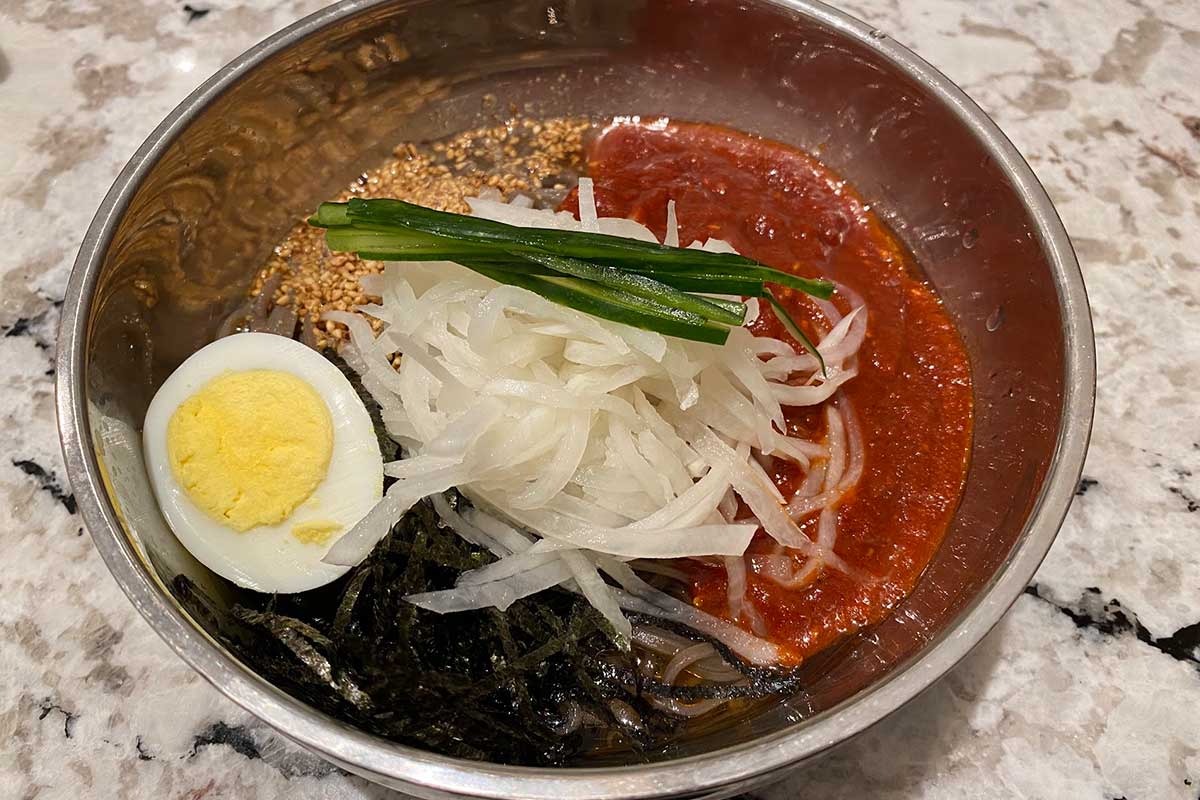
I ordered complimentary bowls of rice to catch the juices of the meats as they hit a juicy nubility. But this may have been a misstep. I also got a side of mak-guksu, chilled buckwheat noodles in a spicy sauce, topped with cucumber, pickled daikon, nori, and a hard-boiled egg. Combined with the hearty corn cheese, this was more than enough starches, and one far more interesting than the plain rice. In fact, I brought home an entire bowl of the mak-guksu (each diner gets one) and enjoyed it just as wholeheartedly the next day on its own as I did when I piled it with sizzling beef.
Among those cuts, I favored the marinated options. Galbi and rib fingers are both served after a sweet soy bath, rendering them both even more tender and more flavorful than the already amply alluring chunks of unmarinated beef.
The meal ends with a choice of dessert. If it’s available, take advantage of the hazelnut shortcake, which Jang plans to import from Japan until he can find a reliable local cake vendor. Its cloud-like texture withstands drizzles of homemade chocolate ganache, but feels so light that it shouldn’t.
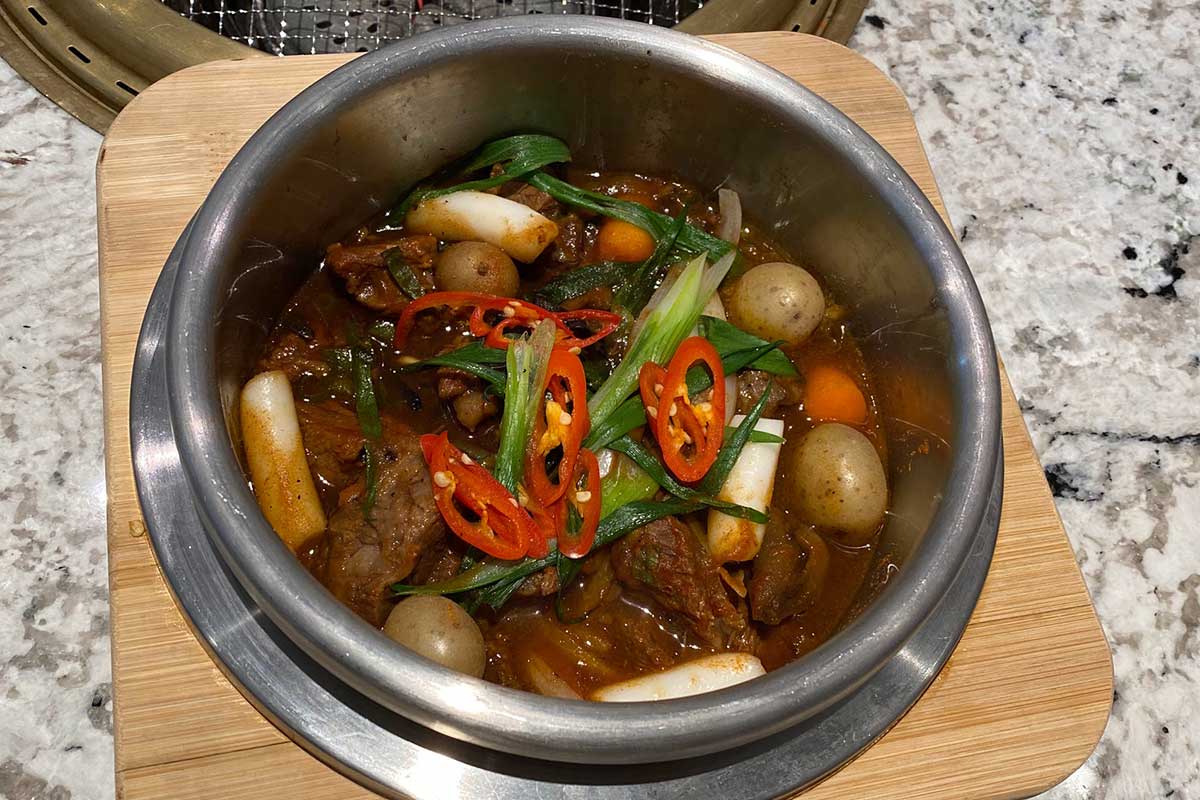
Until recently, the table-top grills were the only way to enjoy ribs at Ingle. But, with an eye toward more takeout business, Youn has added a mighty pot of galbi jjim, or braised short rib stew. Its liltingly sweet, mildly spicy broth competes with the marinated barbecue for the delectability prize. I would say to get both, but the galbi jjim is sized for two or three, and could probably feed four in a pinch.
The chunks of short rib are indubitably the main attraction of the stew, but that doesn’t mean that chewy wood-ear mushrooms and a smattering of rice cakes don’t earn their due, ably absorbing the complex liquid. Potatoes, onions, carrots, chiles, and scallions also combine for a dish that’s especially great on a chilly day, but that I’ll be craving throughout the year.
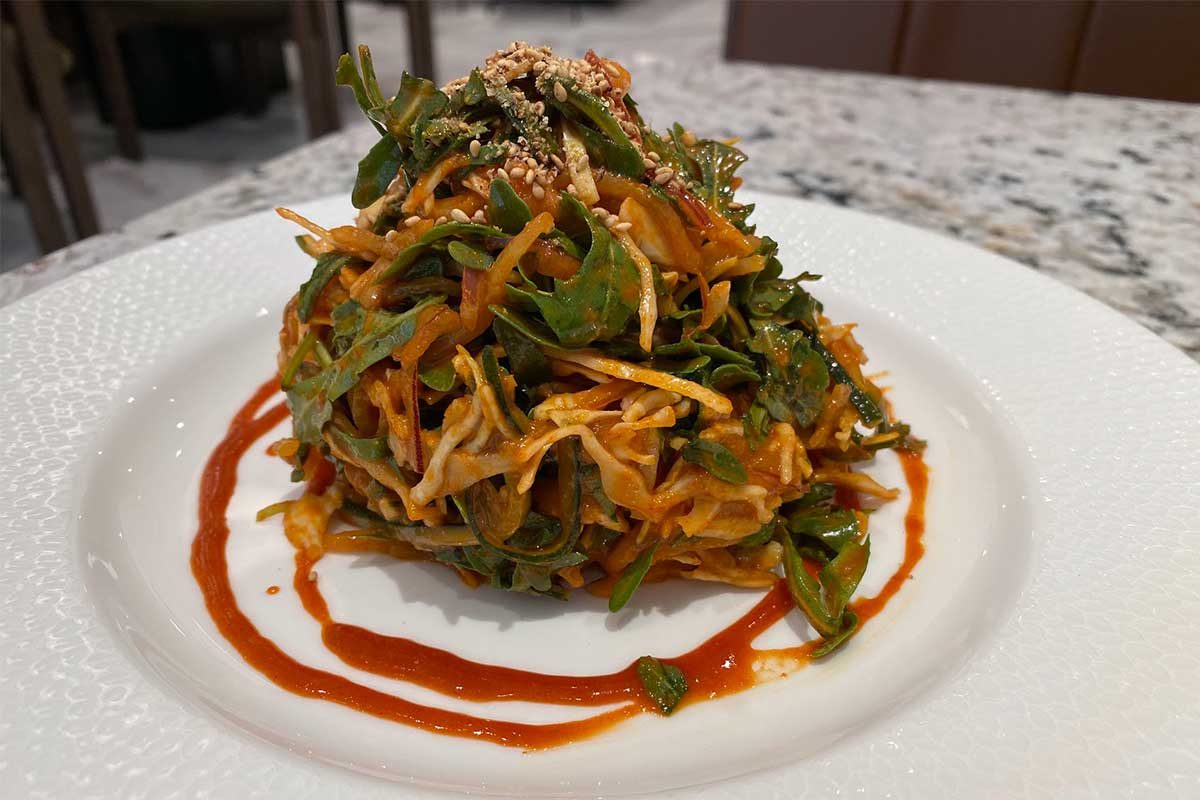
For something a little more summer-appropriate, I recommend the hwe moo-chim. Essentially Korean-style poke, the dish is composed of raw salmon woven with fresh vegetables and served in a gochujang-red mound that’s as refreshing as it is fiery.
Jang, who also owns Japanese fast-casual mini-chain Donburi, grew up in McLean and says that it was his aim to bring Korean food back to his hometown area. But not just any Korean restaurant. “I wanted to build a restaurant where I can take my parents or my friends for special occasions,” he says. He’s succeeded at both goals.
And Ingle is still growing. Youn continues to both hone and expand the menu, in part thanks to the addition of an oven in the kitchen. Besides that, in the next month or so, the restaurant will kick off a new beverage program based on traditional Korean spirits, sourced from distilleries in the homeland. But I don’t need such bells and whistles to get me back to Ingle. The ribs are enticement enough.
Ingle Korean Steakhouse
Rating:★★★★
See This: The ribs you’ll be eating are on display at the front of the restaurant. High ceilings create an open feel accented by white-marble tables inset with Korean barbecue grills.
Eat This: Hwe moo-chim, galbi jjim, marinated galbi
A la carte: $16–$110
Prix-fixe: $55 at lunch, $75 at dinner
Desserts: $2–$5
Open daily for lunch and dinner.
8369 Leesburg Pk., Ste. A, Vienna
Feature image by Alice Levitt
For more local reviews, subscribe to Northern Virginia Magazine’s Food newsletter.

